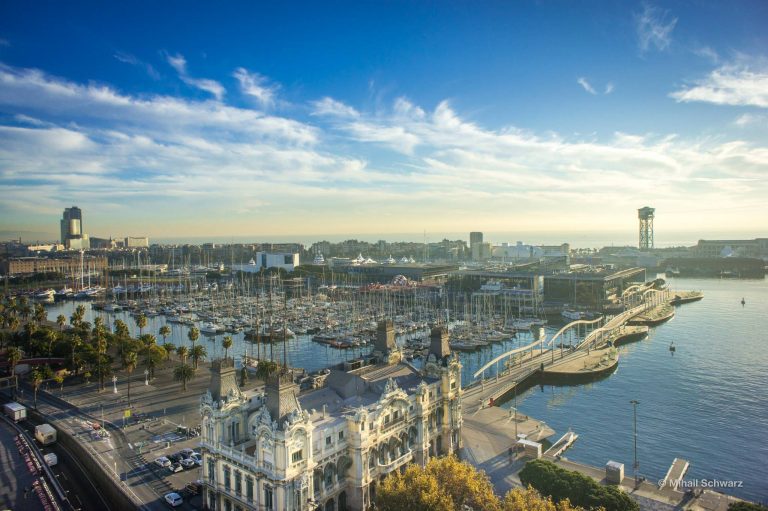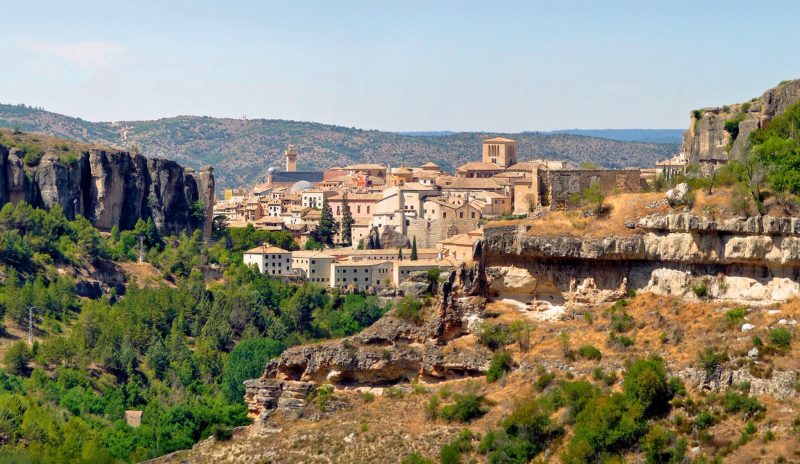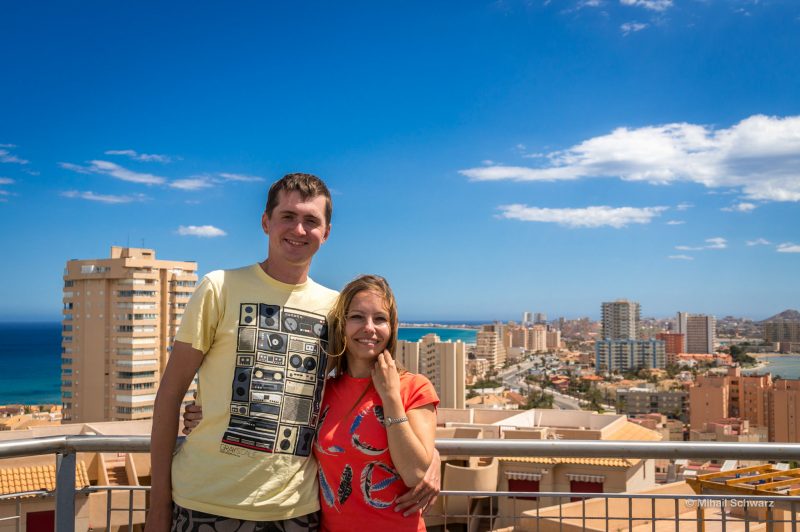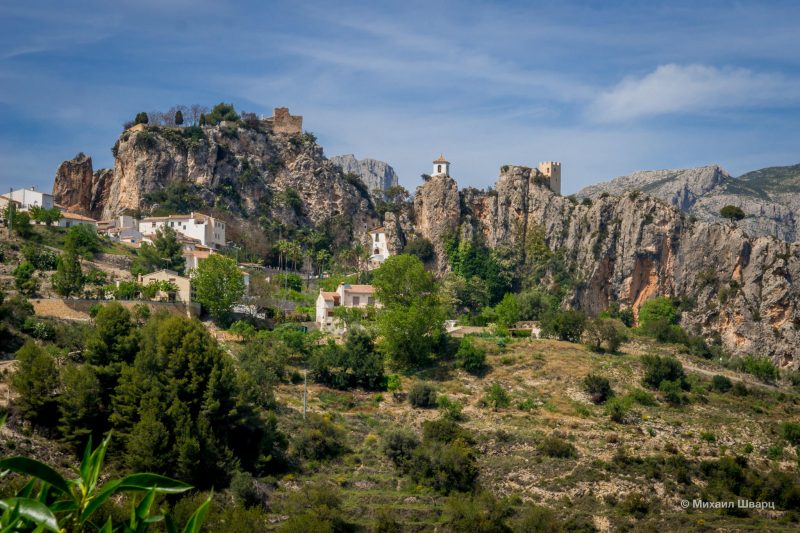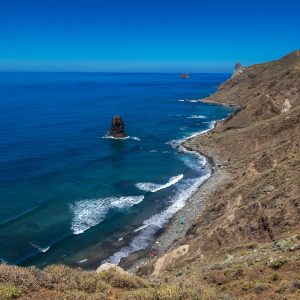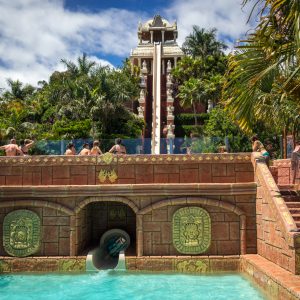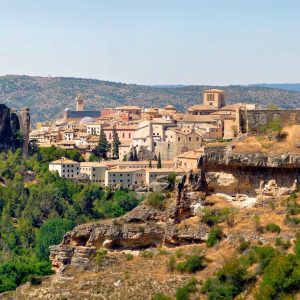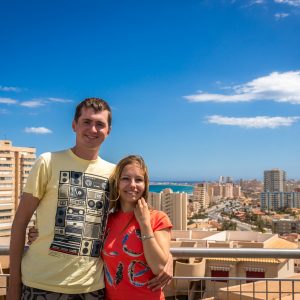Barcelona is rightly proud of its rich historical, architectural and artistic heritage, in which monuments from two eras stand out. On one side is the Gothic Quarter with the Cathedral, the City Hall and the Palau Généralitat, on the other is the work of Antoni Gaudi, the greatest architect of the Art Nouveau era.
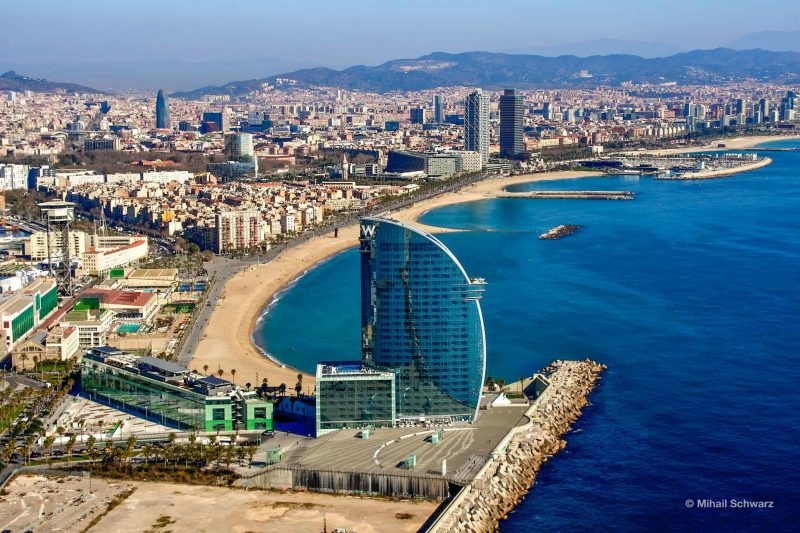
What To Do In Barcelona
- Walk along the lively atmosphere of the Ramblas and see the famous masterpieces of Barcelona architecture.
- Climb up to the observation deck of the Columbus Monument and admire the coastal part of the city, the panorama of the Old Port and the Gothic Quarter.
- Attend a soccer match at the Camp Nou stadium and feel the united impulse of the citizens cheering for Barça.
- Come to the walls of the Sagrada Familia, Gaudi’s unfinished work, to marvel at the beauty and grandeur of the huge temple staring into the sky.
- Stroll through the mysterious Gothic Quarter, touch the secrets of an ancient Roman settlement, and experience awe in the dark, winding medieval streets.
- Visit the Picasso Museum.
Barcelona is the capital of Catalonia and the province of Barcelona. The city occupies the northeastern tip of the Iberian Peninsula. It was founded by the Carthaginians around 230 BC. Today, Barcelona is a major Mediterranean port, a center of industry, international business, trade and tourism, as well as a center of students, science, art and sports.
Main Attractions Of Barcelona
Temple Of The Holy Family / Temple Expiatori De La Sagrada Família
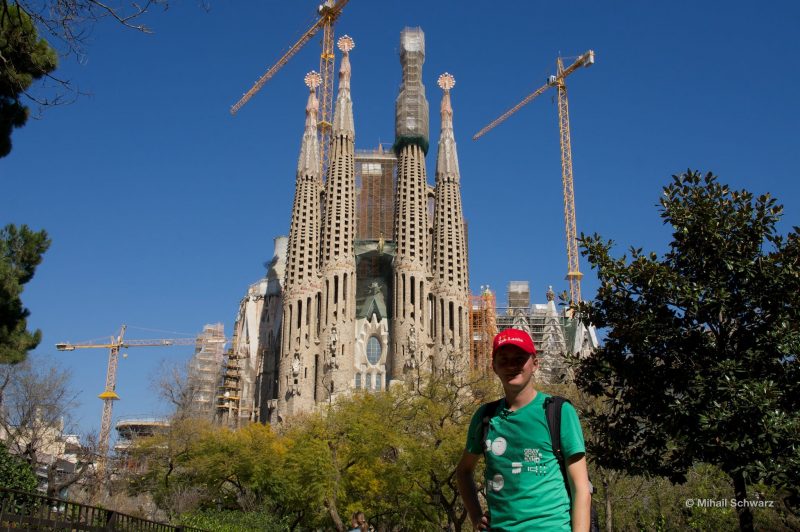
The redemptive Temple of the Holy Family or Sagrada Familia (Templo Expiatorio de la Sagrada Familia; cat. Temple Expiatori de la Sagrada Familia) is a fantastic, majestic symbol of the harmony of nature and man, a world-class architectural masterpiece, a monument to the genius of Antoni Gaudi.
It is filled with Christian symbolism and enchanting mysticism. According to the architect’s plan, the church was to have three neo-Gothic and Art Nouveau facades: the Nativity, the Passion, and the Glory of Christ. The construction of the cathedral began in 1882. But the famous Catalan only had time to complete the Nativity facade, which was detailed and gloomy. Gaudi was buried in the crypt of the temple.
The project is still incomplete, the construction of the Sagrada Familia continues. Already in the 21st century, the sculptural decoration of the facade of the Passion was completed, the vaults of the gallery, the apse and the mediatorial cross were erected. In 2010, the Church of the Holy Family was consecrated. Now new towers are being built: there will be 18 of them.
Today the church can be viewed not only from the outside but also from the inside. Some of the towers are equipped with observation decks and there is a small museum.
☝️To avoid standing in line for hours, buy your tickets in advance online.
Casa Milà
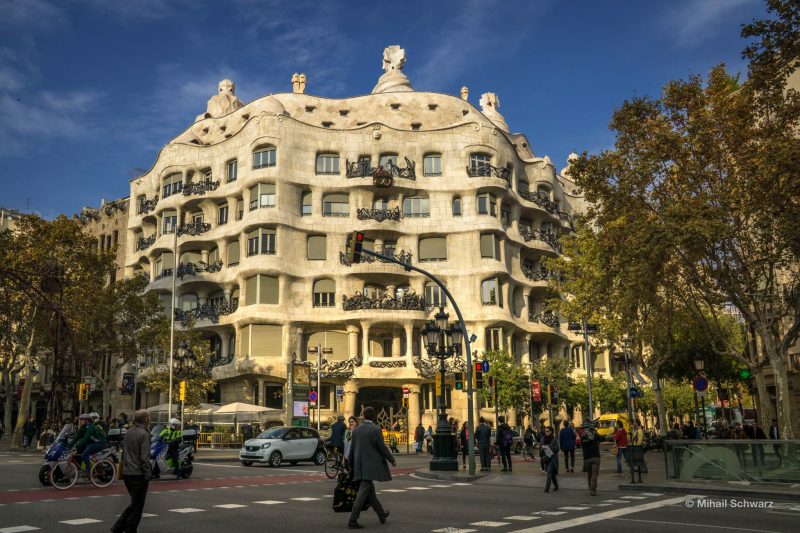
Casa Mila is a rock building with a massive gray Art Nouveau façade that was Antoni Gaudi’s last civilian project. There are no straight lines here: the walls are like waves, the windows are like underwater caves, the lattices of the balconies imitate sea grass. The Barcelonans call this house “La Pedrera” (The Quarry).
Casa Mila was built in 1910 at the request of the politician and textile magnate Pere Mila y Kamps. An innovative ventilation system helped eliminate the use of air conditioning, and the presence of courtyards helped save noticeably on lighting. The Mila house is still residential, but the mezzanine and attic are devoted to the museum. You can visit the apartment on the fourth floor and feel the atmosphere of life of the Barcelona bourgeoisie at the beginning of the 20th century. In 1984, Casa Mila was inscribed on the UNESCO World Heritage List.
Casa Batlló
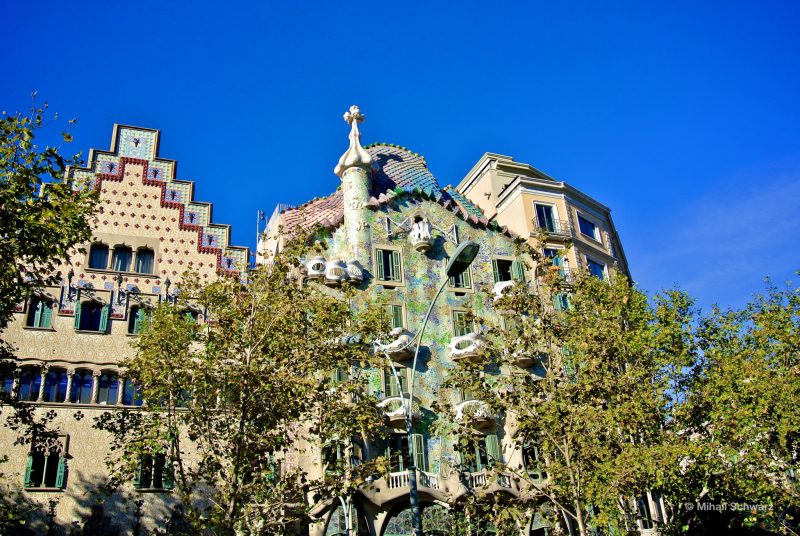
Casa Batlló is one of the symbols of Barcelona. The former apartment building was completely rebuilt by Antoni Gaudi in 1906 at the request of its owner Josep Balho. Casa Batlló lacks symmetry, orderliness, and straight graphic lines.
The architecture of the house symbolizes the legend of St. George, who courageously pierced the dragon with his spear. At the top of the building rises a tower with a cross – it is a spear. The roof, lined with colored tiles – the back of the dragon. The colorful fine tiles, with which the facade is tiled, are the scales of the dragon. And the windows, columns and balconies represent the skulls and bones of the victims he ate.
For such an unusual appearance Casa Batlló is popularly nicknamed “House of Bones”. Interesting are the stoves and ventilation ducts of various forms with abstract paintings. In 2005, Casa Batlló was included in the UNESCO World Heritage List.
Visit the magical world of Casa Batlló with. The blue ticket is on sale here.
The Cathedral of the Holy Cross and Saint Eulalia / Catedral De Barcelona
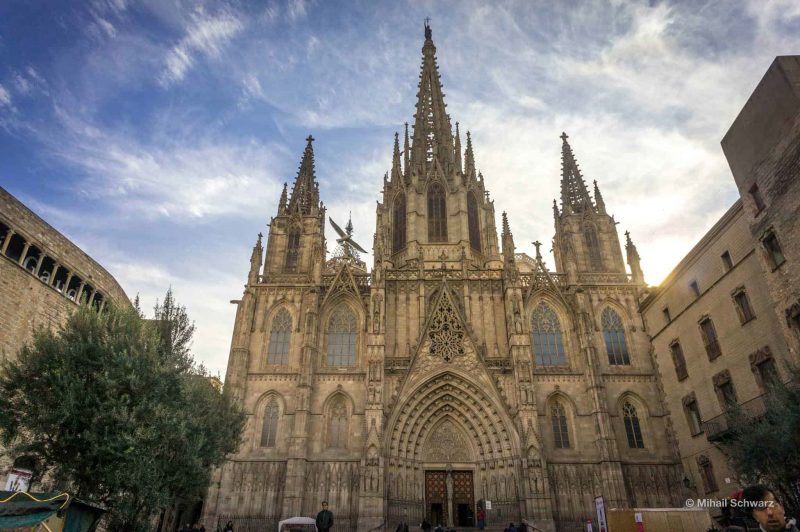
The Cathedral of Barcelona is dedicated to the Holy Cross and Santa Eulalia, patroness of the city (Catedral de la Santa Cruz y Santa Eulalia; cat. Catedral de la Santa Creu i Santa Eulàlia). Its construction began in 1298 on the site of a former Roman temple and lasted until 1420. The Gothic and Neo-Gothic styles are evident in the architecture.
Inside, the main altar, the side chapels, the grand arches, the 14th-century carved choir decorated with the arms of the Knights of the Order of the Golden Fleece and the organ, built in 1537-1539, are worth a visit. The observation deck at the dome of the church offers beautiful views of the city.
The main shrine of the cathedral, the crypt with the alabaster sarcophagus of St. Eulalia, is located under the altar. In the inner churchyard live 13 white geese, according to the number of years of St. Eulalia. The girl was not afraid to throw earth into the altar of the pagans, for which she was brutally tortured.
The Chapel of the Blessed Sacrament (to the right of the main entrance) houses the image of Christ, who was on the ship during the Battle of Lepanto (1571). In honor of him the cathedral got its second name. According to legend, Christ on the crucifixion dodged an enemy shell, so the sculpture has a slightly curved shape.
The cathedral has a small museum with a font, tapestries, and church utensils.
The Church of Santa Maria del Mar / Basílica De Santa Maria Del Mar
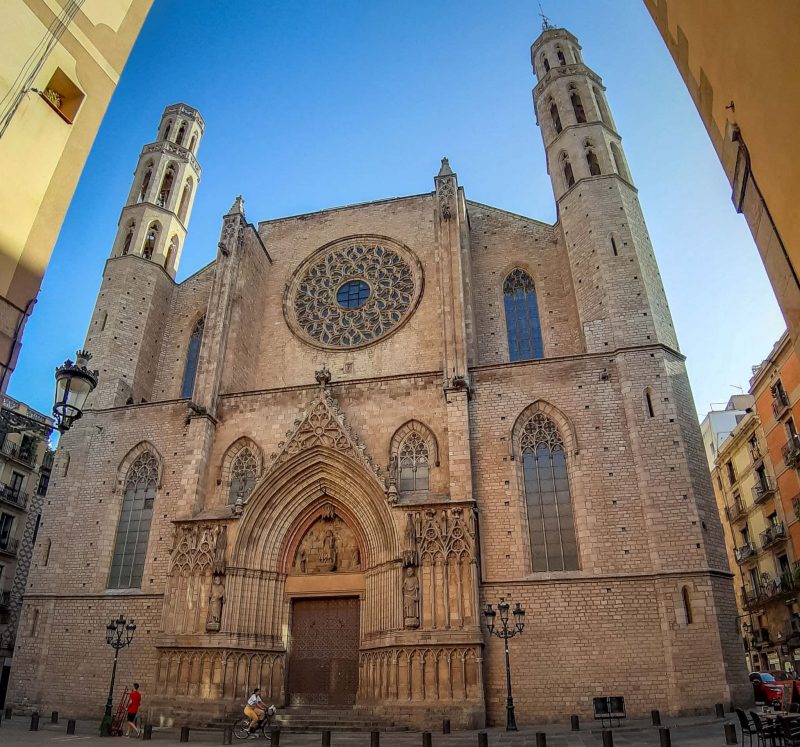
The Church of Santa Maria del Mar (Basílica de Santa María del Mar; Basílica de Santa Maria del Mar) is an example of Catalan Gothic architecture, a true work of medieval art. It was erected between 1329 and 1383 on the site of an older church. The money for the construction was donated by sailors and merchants’ guilds. That is why the church was christened in honor of St. Mary, the patroness of sailors.
Outwardly the cathedral looks heavy: everywhere there are stone planes with a minimum of decorations. The low octagonal bell towers end with cut horizontal tops. The buttresses are massive. There is a huge rose window, lancet arches, and stained-glass windows. But behind the gloomy walls hide a huge space and a sea of light. And that’s because the three naves form a single space without any architectural borders or excesses. The ribbed simple vault is supported by octahedral thin columns, and through high windows the daylight pours in.
Palace of Catalan Music / Palacio de la Música Catalana
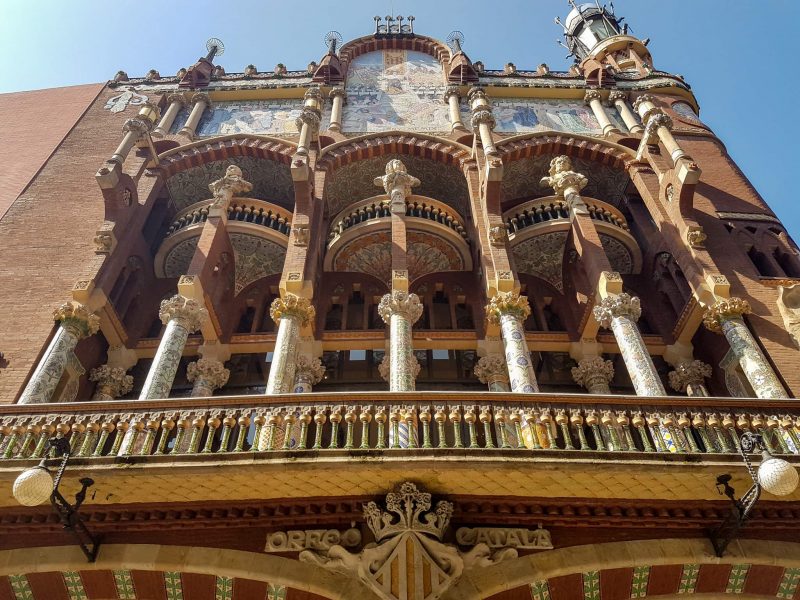
Palace of Catalan Music (Palacio de la Música Catalana) is an impressive architectural ensemble worthy of the UNESCO list. It is the only concert hall in Europe with natural light. It was designed as a concert hall and the headquarters of the Orfeó Català, the choral society of Catalan music. The building was designed by Lewis Domènech y Montaner and first opened to the public in 1908. It is a striking example of Catalan Art Nouveau. Its facades are decorated with columns and glazed mosaics. The concert hall is illuminated by daylight through stained glass windows and a ceiling vault.
The palace hosts concerts of symphonic and chamber music, Catalan song and jazz, and musical performances. You can visit it by buying a ticket for a concert or with a guided tour of the palace.
Montjuïc
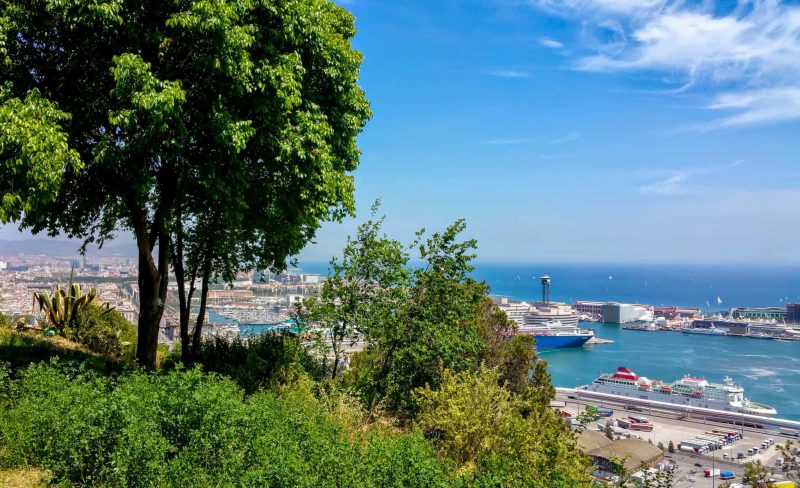
The high hill (173 m) in the southern part of Barcelona is Montjuïc. The Barcelonans call Montjuïc a mountain. The name is translated from the old Catalan as “Mont juïc” (Jewish mountain). This is a very picturesque area, where museums, historical monuments, nightclubs, parks with views of the city and the port are concentrated. There was once an Iberian settlement here, and in 1640 a fortress appeared.
Many sites on Montjuïc were built for the 1929 World’s Fair and the 1992 Summer Olympics. The main attractions are the Magic Fountain, the National Museum of Art of Catalonia, the Spanish Village, the Olympic Ring, the Joan Miró Foundation Museum, the Montjuïc Fortress, the Botanical Gardens, the Mossen Costa y Llobera Gardens.
The Citadel Park / Parc De La Ciutadella
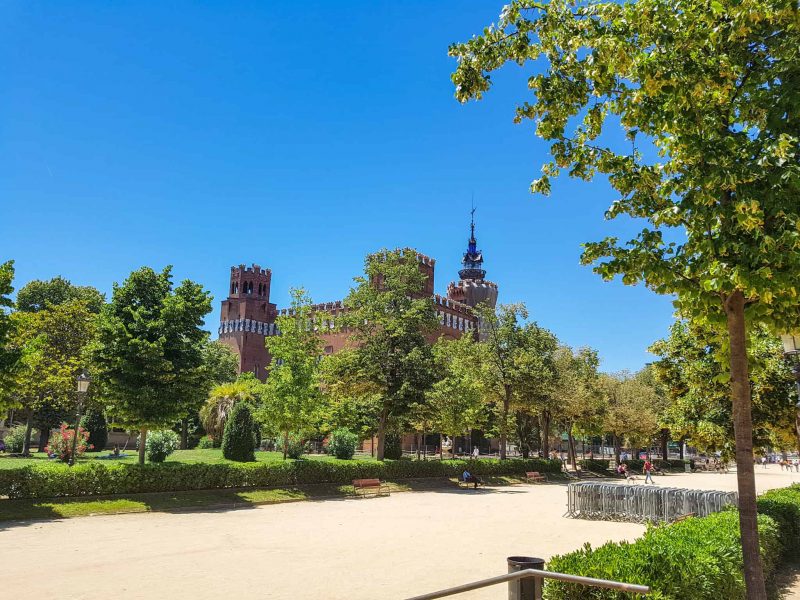
The history of the Citadel Park (Parc de la Ciutadella) dates back to the 18th century. Catalonia was annexed to Spain after the War of the Spanish Succession (1714). King Philip V ordered a fortress to be built in the center of Barcelona, with the goal of suppressing the “ardent and freedom-loving temper” of the local inhabitants. The fortress survived until 1869, when its military significance waned. The Spanish authorities authorized the destruction of the citadel, a reminder of the occupation regime. In 1872 the Citadel Park was laid out on the vacated land.
Now the park is one of the favorite places for walks and recreation for local residents and visitors. Three wide alleys have been planted here: a poplar, a linden and an elm tree, and many shady paths with benches have been laid out. In the center of Ciutadella Park there is a lake where you can go boating and feed the ducks and turtles.
New constructions also appeared in the park. The Castle of the Three Dragons (Castell dels Tres Dragons), the work of the famous Barcelonian Lewis Domènech y Montaner, the Cascade Fountain, designed in collaboration with Antoni Gaudi, the 30-meter Arc de Triomphe, the Winter Garden and the Palm Orangery were built for the 1888 World’s Fair. In the Castle of the Three Dragons, a zoological museum called the Laboratory of Nature (Laboratori de Natura) was opened. In the park there is a zoo and one of the oldest museums in Barcelona, Martorell Museum (Museu Martorell).
Parc Güell
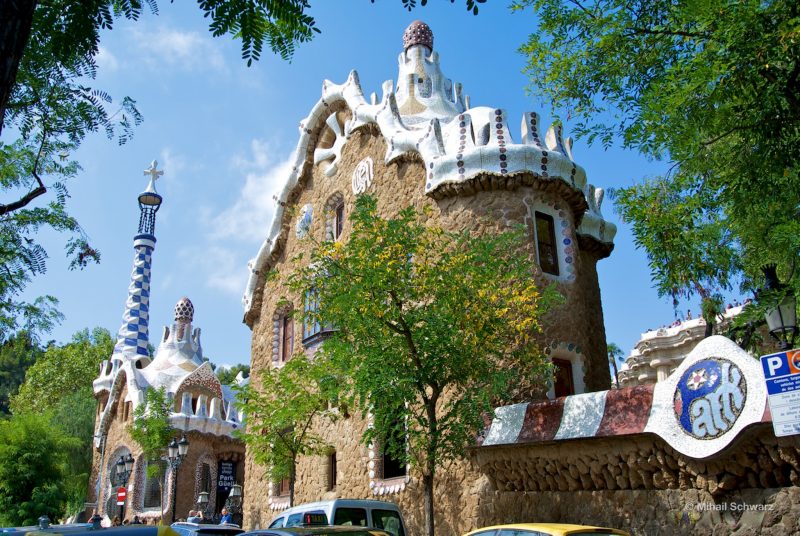
Parque Güell is a fairytale world created by a brilliant architect for his beloved city. Antoni Gaudi built it between 1901 and 1914. This spectacular corner of Barcelona takes up 17 hectares of land. Thanks to its protection status as a UNESCO World Heritage Site, it is maintained in excellent condition.
The park was created by the famous politician and philanthropist Eusebi Guell, who bought the hill for the construction of luxury housing in the then fashionable “Garden City” style, which came from England. The idea subsequently fell through because the wealthy Spaniards didn’t want to live too far away from the city center. But Gaudi saw his part of the project through to completion.
Park Guell is striking from the entrance pavilions: they have been compared to “gingerbread houses”. Then come the grand grand grand staircase, the mosaic bench curved in the shape of a sea serpent, the central Hall of a Hundred Columns (there are actually 86 of them), the futuristic stone alleys with “bird’s nests”. When creating the decor, the master used a unique technique of tiling with shards of ceramic tiles and broken glass. In the green oasis there are pine groves rustling, palm trees growing and birds singing. The Gaudí House Museum was opened in 1963 in the architect’s former mansion in the park.
Buy your tickets without waiting in line here.
The Nou Camp / Camp Nou
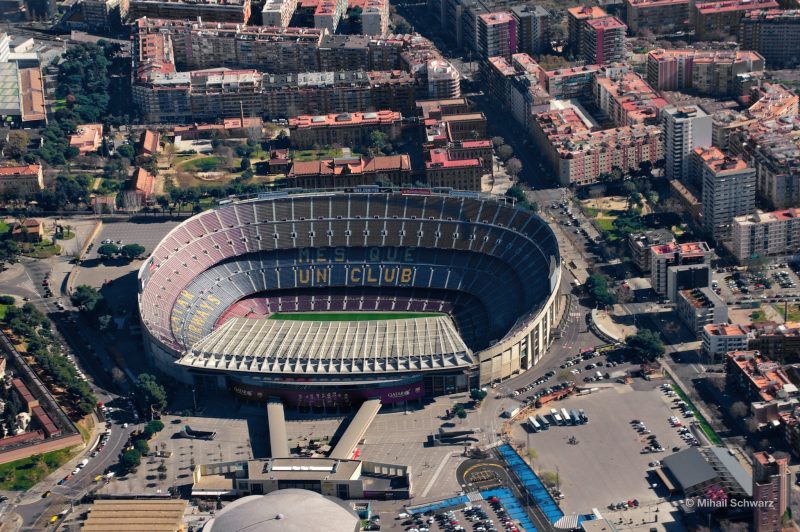
The Nou Camp (Camp Nou) is the home stadium of FC Barcelona. It was built in 1957, but its exterior and interior appearance was changed several times. It was planned to be called Estadi del FC Barcelona but popularly its name was changed to Camp Nou.
Camp Nou is considered the most spacious not only in Spain, but also in the whole of Europe, and the second in the list of soccer stadiums. It seats 99,354 people. Camp Nou hosted soccer matches of the European Championship, World Cup and the 1992 Olympic tournament. The stadium often hosts concerts.
In 1984, the Josef Luis Núñez Barça Museum was opened at the stadium. There are numerous awards of the Barcelona soccer and basketball clubs, documents, videos and photos. Visitors are invited to go down to the locker room and visit the commentary booths.
☝️ Book a stadium tour in advance here.
Tibidabo
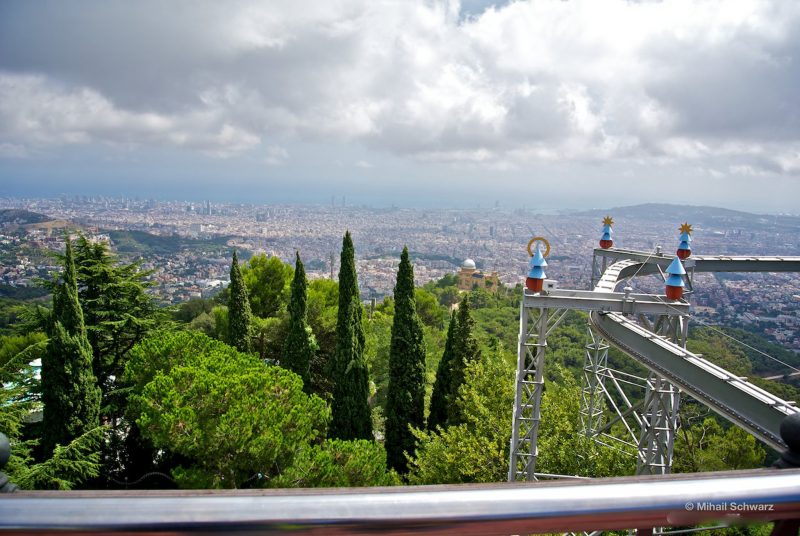
Mount Tibidabo is the highest point in Barcelona with the best vantage point. “To you I give,” the devil said to Jesus, pointing to the mountain. These words from the Gospel served as the name for the mountain. The Neo-Gothic Temple of the Sacred Heart (Templo Sagrado Corazón de Jesús; cat. Temple del Sagrat Cor de Jesús) crowns its top. The dome of the church is dominated by the figure of the Savior.
On the slopes of Tibidabo is the Parque d’Atraccions Tibidabo, an amusement park of the same name (Parque de Atracciones Tibidabo in Spanish), a 70,000 m² entertainment complex. It opened in 1899 and is the oldest amusement park in Spain and the second in Europe. The Torre de Collserola was erected on the mountain in 1992. Its height is 288 meters. It is the tallest building in the city. On the 10th floor of the tower is an observation deck.
In 1904, on Mount Tibidabo, the Fabra Observatory (Observatorio Fabra; cat. Observatori Fabra) was opened. The main focus of the observatory is the study of asteroids and comets. Among the sites of interest on Mount Tibidabo are the Ràdio Barcelona Rationalist Pavilion and Gran Hotel La Florida built in 1925. The funicular takes tourists to Tibidabo.
➥ Tibidabo
What Sights In Barcelona You Can Visit For Free
In Barcelona, the cultural heritage can be enjoyed by all, regardless of the thickness of the purse. There are plenty of free offers.
Gaudí’s architectural creations such as the Sagrada Família, Palau Güell, Casa Batlló, Casa Milà, Casa Vicens, Casa Calvet and others are endless and, importantly, free to view from the outside.
The Gothic Quarter (Barri Gòtic), where most of the buildings date back to the 14th and 15th centuries and the spirit of the Middle Ages is in the air, is also absolutely free.
Viewpoints Of Barcelona
You can see the beauty of the capital of Catalonia practically from a bird’s-eye view while strolling on Mount Tibidabo.
The observation deck of Turó de la Rovira on the mountain of the same name is also known as El Carmel bunker. It was built during the civil war in 1937.
A viewing platform on the roof of the Arenas de Barcelona in Plaça d’Espanya.
A viewing platform on the top floor of the El Corte Ingles shopping center on Plaza Catalunya.
A vantage point near the National Museum (Museu Nacional d’Art de Catalunya) with a view of the Avinguda de la Reina Maria Cristina and its Venetian Towers (Torres Venecianes), the Magic Fountain and the Quatre Columnes, as well as the Spanish Plaza.
Interesting “freebies” Near Montjuïc And On The Waterfront
Evening light and music show of the Magic Fountain (Font màgica de Montjuïc).
Gardens and viewing platforms on the Montjuïc hill.
The Olympic Ring and its facilities of the 1992 Summer Olympics.
Castell de Montjuïc.
The Rambla de Mar, which overlooks the promenade, the sea and the Old Port (Port Vell).
Sculptures and monuments, including the Barcelona Head (La cara de Barcelona), the Shrimp (La Gamba), the Woman and the Bird (Dona i ocell), the Raval Cat (El Gato del Raval) and the mosaic “The Rose of the Winds” by Joan Miró.
Beaches of Barcelona.
Plaça de Catalunya with its sculptures and fountains, Barcelona’s oldest square called Nova, Plaça Del Pi, Plaça del Portal de la Pau with the Monument a Colom and other squares in the city.
The Rambles, the city’s main walking and tourist street, is filled with its lively atmosphere.
The Mercat de la Boqueria is a realm of tastes, smells, sounds and colors.
The Cathedral (Catedral de Barcelona) and other churches of the city.
Free Parks In Barcelona
Parc de la Ciutadella with fountains, sculptures, palm trees, lake, birds. All summer on Wednesdays and Fridays at 22:00 you can listen to free jazz concerts.
Parc del Laberint d’Horta, where an episode of Perfumeur: The Story of a Murderer was filmed, is free on Sundays and Wednesdays.
The Jardines del Palacio de Pedralbes is an intimate park in a prestigious neighborhood dominated by the former Royal Palace.
Free Museums In Barcelona
The Hospital de la Santa Creu i Sant Pau is striking in its fanciful architecture, but it is still a functioning hospital.
Most museums in Barcelona offer free admission once a month (usually Wednesday or Sunday) so that everyone can enjoy their cultural heritage. Check the official websites of the museums for information.
The Metronome Museum of Contemporary Art (Metrònom. Fundación Rafael Tous de Arte Contemporáneo) is a “museum of the future” and a haven for art, sometimes too experimental. Admission is free.
Born Centre de Cultura i Memòria with archaeological excavations covering the time period from Roman rule to the beginning of the 18th century.
The Barcelona Photo Archive (Arxiu Fotogràfic de Barcelona), which presents historical photos of the city, people, interesting events and sights in different periods, starting from 1839.
Free Sightseeing Tours In Barcelona
with Runner BeanTours,
with Feel Free Tours,
with Travel Bound,
with Sandemans.
Free Concerts In Barcelona
Free classical and jazz music concerts can be heard in many parks in Barcelona in June and August during the Music in the Parks festival.
During the La Mercè fiesta, free concerts are held all over the city, from large squares to bars and clubs.
What Discount Cards And Combo Tickets Are Available In Barcelona
There are several types of discount cards and combo tickets in Barcelona. Explore their features and choose the one that will help you see everything you want to see and save a lot at the same time.
Barcelona Pass
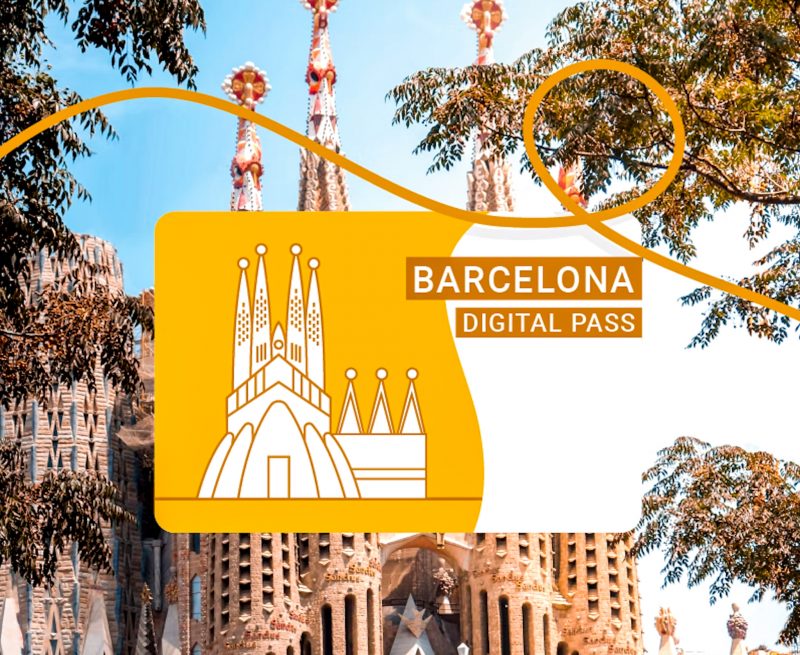
The Barcelona Pass card is suitable for those who are visiting the capital of Catalan for the first time and plan to actively visit the sights. Ordered through the Internet, the card will come to your email. All online!
What Barcelona Pass
- Quick entrance to the Sagrada Familia and Parque Guell;
- a guided tour of the Park Guell: audio guide application on your phone;
- travel on the Hop on Hop off tour bus around Barcelona + free audio guide;
- 10% discount on your next reservation.
Barcelona Pass does not entitle you to free public transportation.
Barcelona Card
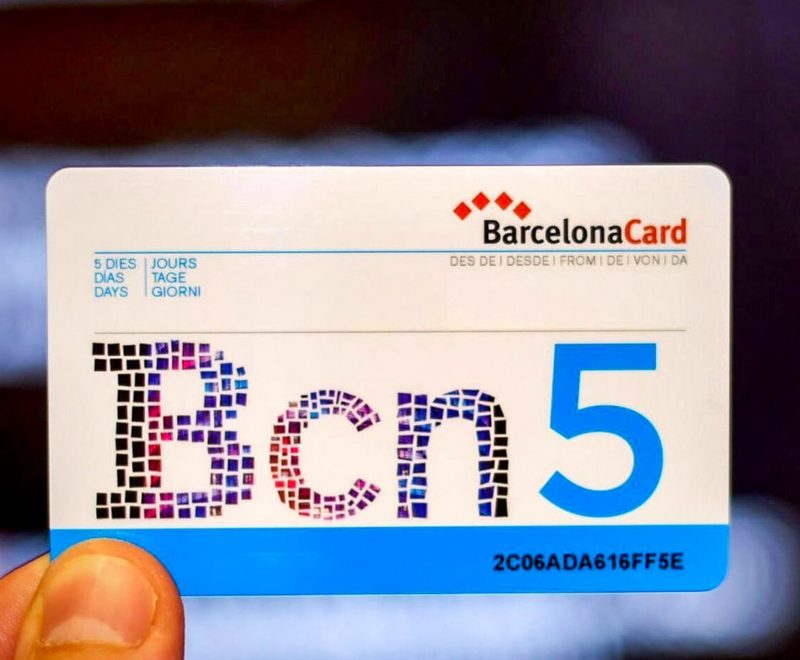
The Barcelona Card is a travel card and a discount ticket. It is a good deal if you are travelling with children. The price of the card depends on the number of days of use (Barcelona Card Express/72/96/120 hours) and if you have children. It is cheaper to buy the Barcelona Card online, but you will have to pick it up at the airport or at pickup points in the city center.
What gives the Barcelona Card
- Free public transportation (unlimited rides);
- free admission to 25 Barcelona museums (the Barcelona Card for 48 hours does not give such a right);
- discounts on tickets to many museums, attractions, shows, musical performances, etc.;
- map and guide to Barcelona.
Hola Bcn!
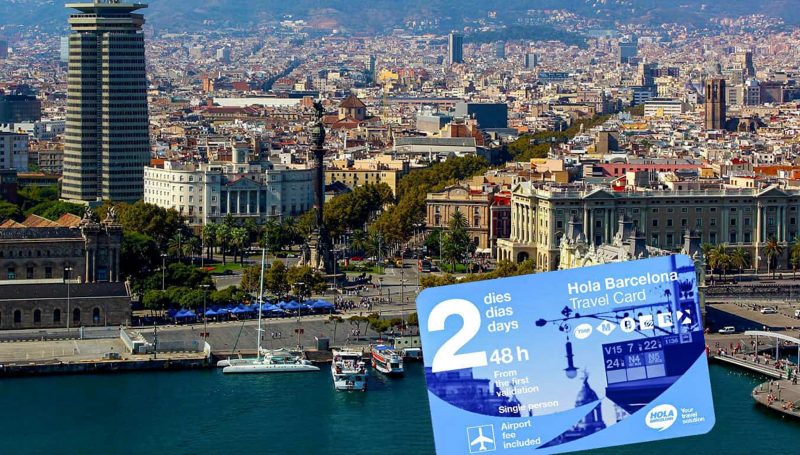
Hola BCN! – is a transport card for 48/72/96/120 hours that allows you to explore Barcelona at your own pace.
What gives Hola BCN!
- Unlimited rides on subways, buses, streetcars;
- fare on City Rail (FGC) trains and commuter trains of the Renfe state rail network within Zone I;
- Metro fare from Barcelona airport to the city center and back.
Articket Barcelona
The Articket Barcelona card is designed specifically for art lovers.
What Articket Barcelona gives
- Opportunity to visit 6 significant museums of the city at a reasonable price and without queuing;
- card is valid for one year.
Combo Ticket
The combined ticket is another advantageous option that will save time and money.
The Rodalies train network has agreements with several Catalan tourist destinations, including the PortAventura theme park. The combined ticket “two way train + admission ticket” costs you the price of the admission ticket to the park. You can buy your ticket online or from the ticket machine at the train station. Up-to-date information on combo-tickets is here.
How To Buy Tickets To Museums In Advance
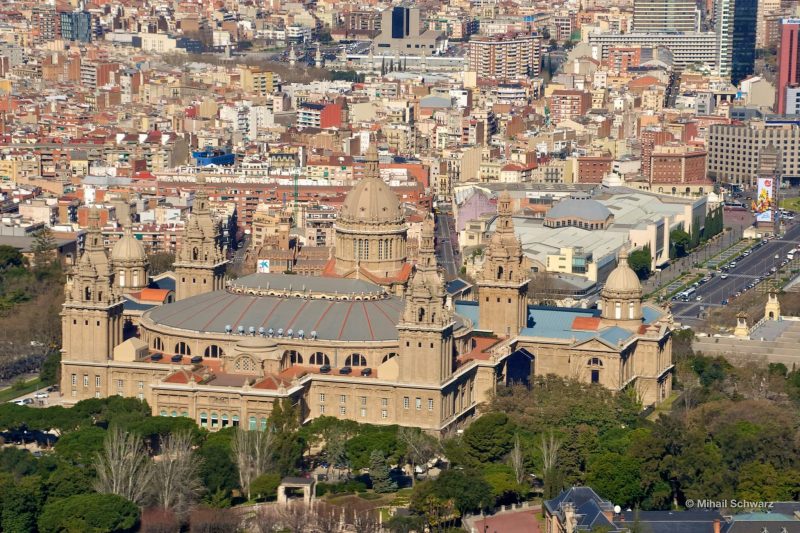
Barcelona is a city with a rich history, very popular with tourists. Its museums are ready to show their treasures to visitors. Plan your museum visits in advance. Without leaving your home, buy tickets in advance on getyourguide, Tiqets or official websites and save time and money! The Internet is there for you.
Where To Buy Tickets To Soccer Matches
The Spanish Barcelona is one of the strongest soccer clubs in the world. Its home arena is the Camp Nou Stadium. I recommend buying tickets for a soccer match on the Internet, for example through ticketnetwork.com.
Which District Of Barcelona Is Better To Choose A Hotel
Very briefly about the areas of the city and give links to a selection of good hotels in these areas.
In the Old City (Ciutat Vella) you will find entertainment for every taste, sightseeing and shopping, but the prices of accommodation here are overpriced. It is also very touristy, the houses are old, uncomfortable, noisy, stealing and there are no big supermarkets. The old town consists of the Gothic Quarter (Barrio Gótico) with its many monuments; the noisy and restless El Raval, the Barceloneta and the pedestrian villages of Sant Pere and Santa Caterina i la Ribera.
Eixample or New Town is one of the busiest and cleanest areas. The disadvantage is the distance from the sea. Hotels.
Sants-Montjuïc is home to the port and Mount Montjuïc. The area is suitable for families with children. Hotels in the area.
The district of Les Corts includes three districts: Les Corts, La Maternitat i Sant Ramon and Pedralbes. The neighbourhood is quiet and respectable, but expensive and a long way from the city’s main attractions. Hotels in the area.
Sarrià-Sant Gervasi is an expensive respectable neighborhood for the wealthy. Hotels in the area.
Gràcia is one of the best neighborhoods to live in. It is beloved by the bohemian public and students. Young people will love Gràcia. It has the best ethnic restaurants and designer stores. The center is close and tourists are few, but the sea is far away. Hotels.
Horta Guinardó is one of the greenest districts of Barcelona, non-touristy, with traditions and quiet way of life. Suitable for comfortable stay for families with children. Selection of hotels.
Sant Martí is one of the most popular areas because of its access to the sea. Housing can be found here for all tastes and wallets. Hotels.
The areas of Nou Barris and Sant Andreu are not worth settling in. Housing here, although inexpensive, but the infrastructure is poorly developed, far from the center and, in addition, a lot of immigrants. We will not even give a selection of hotels.
How Much Do Hotels In Barcelona Cost
Cheap accommodation in Barcelona can be found in hostels. A bed per night will cost €12-95. In a three-star hotel, a room per night will cost €50-300. Average accommodation in four-star hotel will cost from €100 to €330. In five-star hotel a night will cost € 160-670, and if you rent an apartment – € 80-310.
In Barcelona, the high season is from May to October. Look for special offers from hotels for advance booking. Then you can save 10-20%.
Can You Drink Tap Water
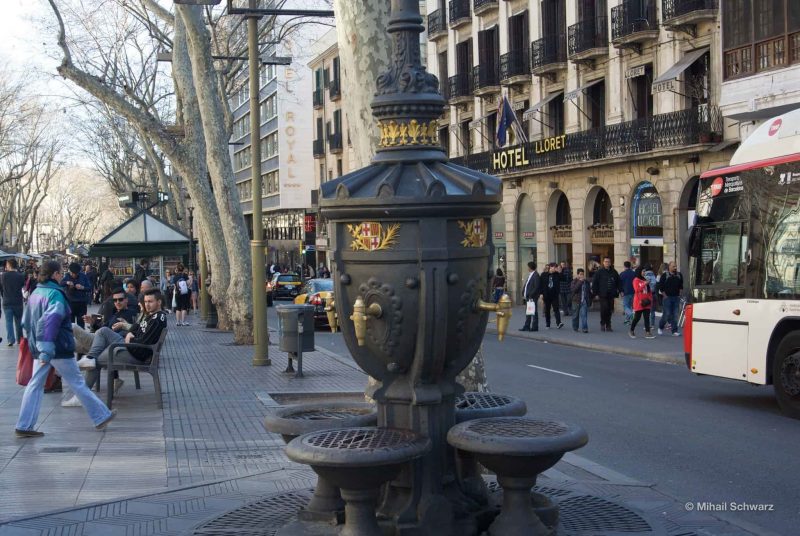
You can drink tap water in Barcelona, but it has an unpleasant taste. It is not necessary to spend money on store-bought drinking water. It is enough to buy a bottle once and just fill it as needed in the drinking water fountains located throughout the city. Just make sure that it says Agua potable (span.) or Aigua potable (cat.) on the fountain, which means “Drinking Water”.
You can save up to €10 in a day on water!
What Transport Ticket To Buy In Barcelona
Barcelona’s public transport is represented by metro, buses, streetcars, commuter trains, funiculars and cable cars, ferries and cabs. Prices may be different from what is written.
Single Ticket
Single ticket costs €2.40.
T-dia Card
A 1-day pass (T-dia card) for one zone will cost €10.50. It is suitable for those who plan to actively move around the city by transport during the day.
T-casual Card
If you are in Barcelona for more than one day and intend to ride public transport, it is better to buy a T-casual ticket for €11.35 for 1 zone. It is valid for 10 trips on all types of public transport. The total travel time must not exceed 1 hour and 15 minutes in one direction. The ticket can be used by several people, for each trip is spent 1 trip.
Hola Barcelona Travel Card
Especially for active tourists there is a pass Hola BCN!, which allows you to make an unlimited number of trips, includes a transfer to and from the airport.
The ticket for two days (48 hours) costs €16.30;
For 3 days (72 hours) – €23.70;
for 4 days (96 hours) – €30.80;
for 5 days (120 hours) – €38.
For more information about transportation in Barcelona you can look at the official website Tmb.cat.
Where To Buy A Transport Ticket
Tickets are sold at ticket offices, from vending machines at subway and commuter train stations, as well as from bus and streetcar drivers.
Which Double-decker Tour Bus Is Better
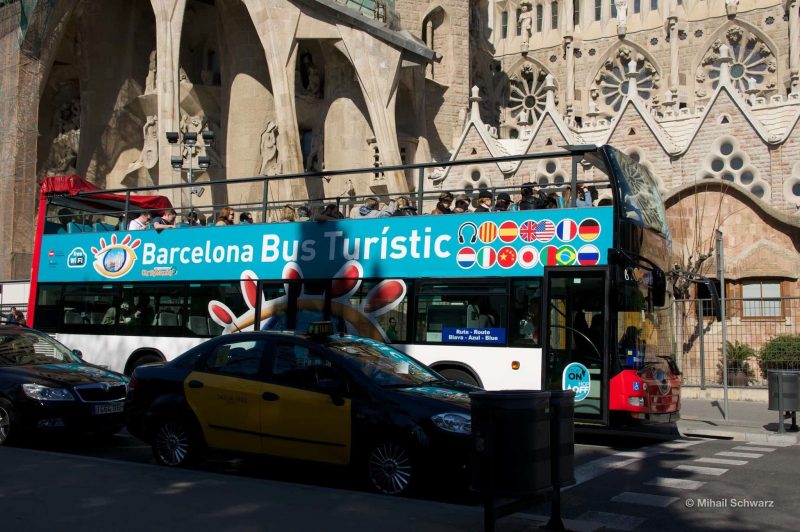
The best way to get an overview of the city in a short time is to ride the hop-on hop-off sightseeing buses Barcelona Bus Turistic and Barcelona City Tour. Buy a ticket for a day or two and ride as much as you want. The buses are double-decker, the second floor is open.
Buses of Barcelona Bus Turistic are more popular.
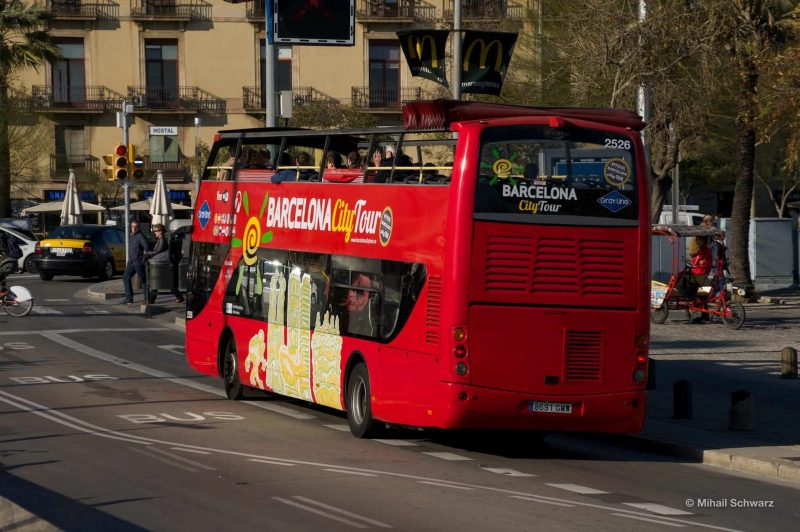
Similarities Between Bus Turistic And City Tour
- take you through the main sights of Barcelona;
- the bus can be used as public transportation: get off at any of the landmarks and get on again or change the route;
- the ticket comes with headphones, a printed guidebook, and a booklet with discount coupons;
- has an audio guide and access to Wi-Fi;
- bus interval is approximately 8-25 minutes.
Differences Between Bus Turistic And City Tour
- Barcelona Bus Turistic offers in addition a sightseeing tour;
- City Tour buses are more comfortable;
- Bus Turistic offers 3 routes and more buses. City Tour has 2 routes.
- Bus Тuristis cheaper
Where To Buy Tickets
Tickets for tourist buses can be purchased in Plaza Catalunya, where all routes start, from the driver, at special tourist kiosks or at the airport. If you buy tickets through the website you will get a 10% discount.
Which Tours To Go On In Barcelona
- Barcelona: E-Bike Tour
- Barcelona: Bike Tour
- Barcelona: E-Bike Tour, Cable Car Ticket and Sailboat Trip
- Barcelona: Guided Segway Tour
- Intimate Barcelona eBike Tour with Gourmet Tapas & Wine
- Welcome to Barcelona: Private Tour with a Local
Where To Watch Flamenco
While vacationing in Barcelona, do not miss the opportunity to enjoy a bright, passionate and exciting flamenco show.
What To Do With Children In Barcelona And Surroundings
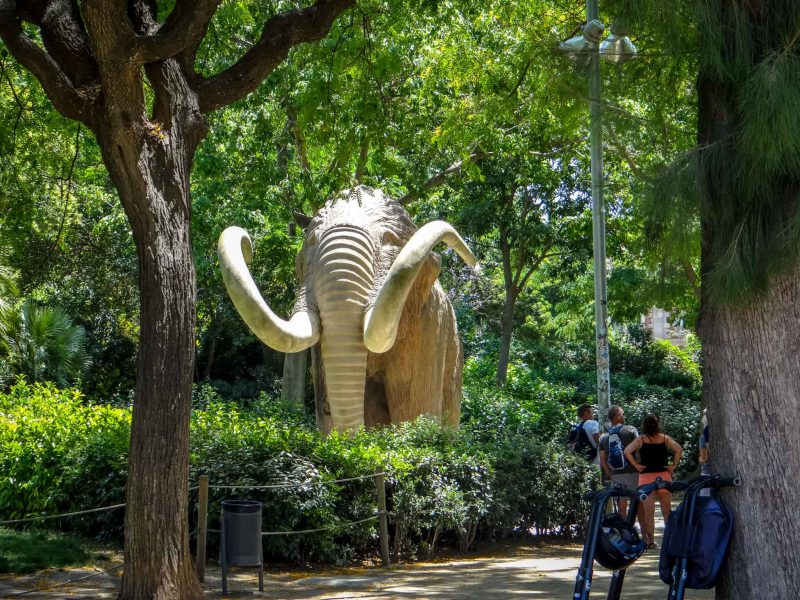
Here are 36 family vacation ideas to keep the little ones occupied during their stay in Barcelona:
- see different fish during the day and dive into the mysteries of the ocean at the Aquarium (Aquàrium de Barcelona), and spend the night watching the sharks. Just bring your sleeping bag, pyjamas and flashlight;
- there are several things to do in Citadel Park: meet the zoo inhabitants and go to the dolphin and seals show;
- meet the furry ancestor of the elephant at the Museo del Mamut;
- in Castell dels Tres Dragons – find fairy lizards;
- at CosmoCaixa, the main science museum, to understand how the world works;
- at the Maritime Museum – see an atlas of Amerigo Vespucci, a model of Magellan’s ship, an ancient galley and a submarine. Also look into the ship’s holds and sailor’s cabin and understand how to sail;
- at the Montjuïc fortress museum – to look at different kinds of weapons and a regiment of tin soldiers;
- at the Museo Nacional de Arte de Catalunya to see works by Rubens, El Greco, and Velázquez;
- in the Spanish Village – observe the work of artisans, taste traditional delicacies, buy souvenirs;
- a visit to the Barca soccer club museum will delight the boys;
- at the Blue Museum (Museu Blau), which belongs to the Museum of Natural Sciences, to learn how life on earth evolved;
- at the Egyptian Museum (Museu Egipci) – learn how to excavate, write hieroglyphics, lie in a sarcophagus and be photographed as an ancient Egyptian;
- at the Museum of Music (Museu de la Música) – examine the national instruments of different countries and listen to their sound;
- take pictures with celebrities at the Wax Museum (Museu de Cera);
- sweet tooth should visit the Museum of Chocolate (Museu de la Xocolata) and learn all about this sweet product, as well as try your hand as a pastry chef;
- view the city from vantage points: the Sacred Heart Temple gallery, the Torre de Collserola, Mount Tibidabo, the Montjuïc fortress, the Columbus statue, the Las Arenas shopping center;
- ride the cable car and see the city from a bird’s eye view;
- visit the amusement park on Mount Tibidabo, ride the Ferris wheel and visit the robot museum;
- jump on the bungee, run through the water in zorbs, ride inflatable boats and velomobiles, build sand castles in BubbleParc;
- Port Aventura theme park guarantees thrills;
- get a powerful adrenaline rush at Ferrari Park (Ferrari Land);
- at the Gran Teatre del Liceu to hear classical productions adapted for children;
- go to a performance with tricks and optical illusions at the Museu del Rei de la Màgia, discover the secrets of famous tricks and become a student of the School of Magic;
- be impressed by the water extravaganza of the Magic Fountain;
- consider the famous mosaic, the salamander, and the winding bench in Park Guell;
- make up a story about a dragon near the Casa Batlló;
- admire the unreal Temple of the Holy Family;
- enter the Imaginarium toy store through different entrances;
- see 147 mini replicas of the main attractions of Catalonia and Mallorca in the park Catalunya in Miniature (Catalunya en Miniatura);
- visit the Illa Fantasia water park;
- take the ancient Tramvia Blau to the Avinguda del Tibidabo to the funicular station;
- take a boat trip and see the city from the ship;
- at Escribá’s pastry shop for something delicious;
- in the pastry shops DelaCrem and Cremería Toscana to enjoy Italian ice cream;
- spend time at the beach.
Very Cool Tours
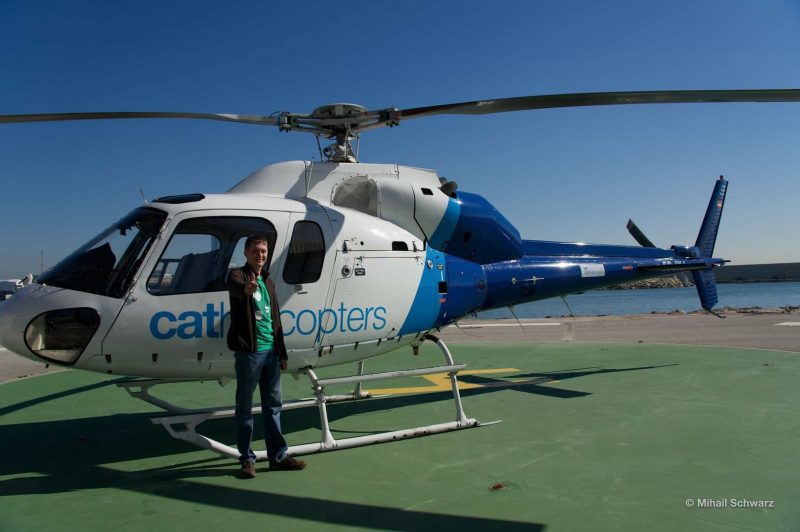
By Helicopter
On A Balloon
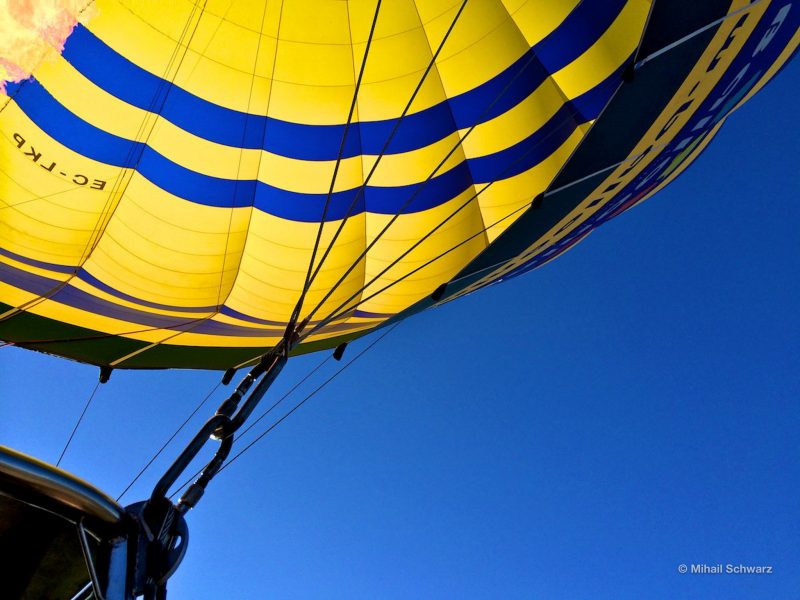
From Barcelona: Small Group Montserrat Hot-Air Balloon Ride
Ride At The Formula 1 Track
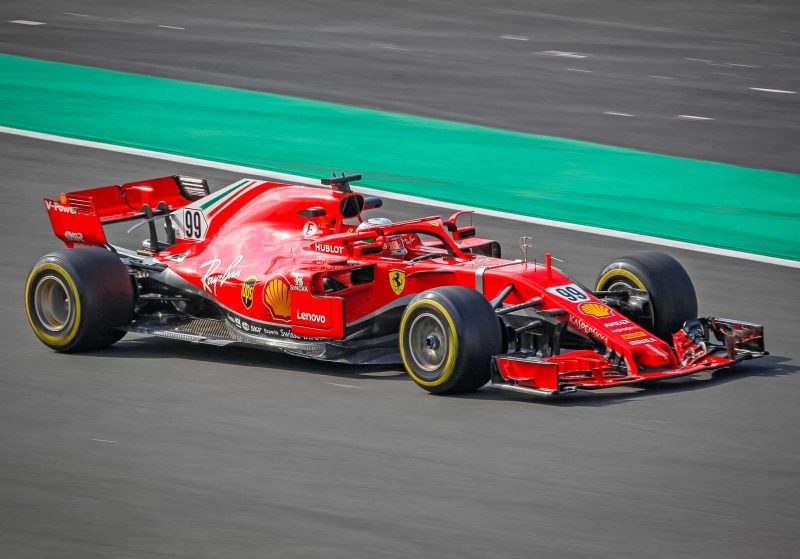
Drive the car of your dreams at the Circuit de Barcelona-Catalunya
Rent A Bike In Barcelona
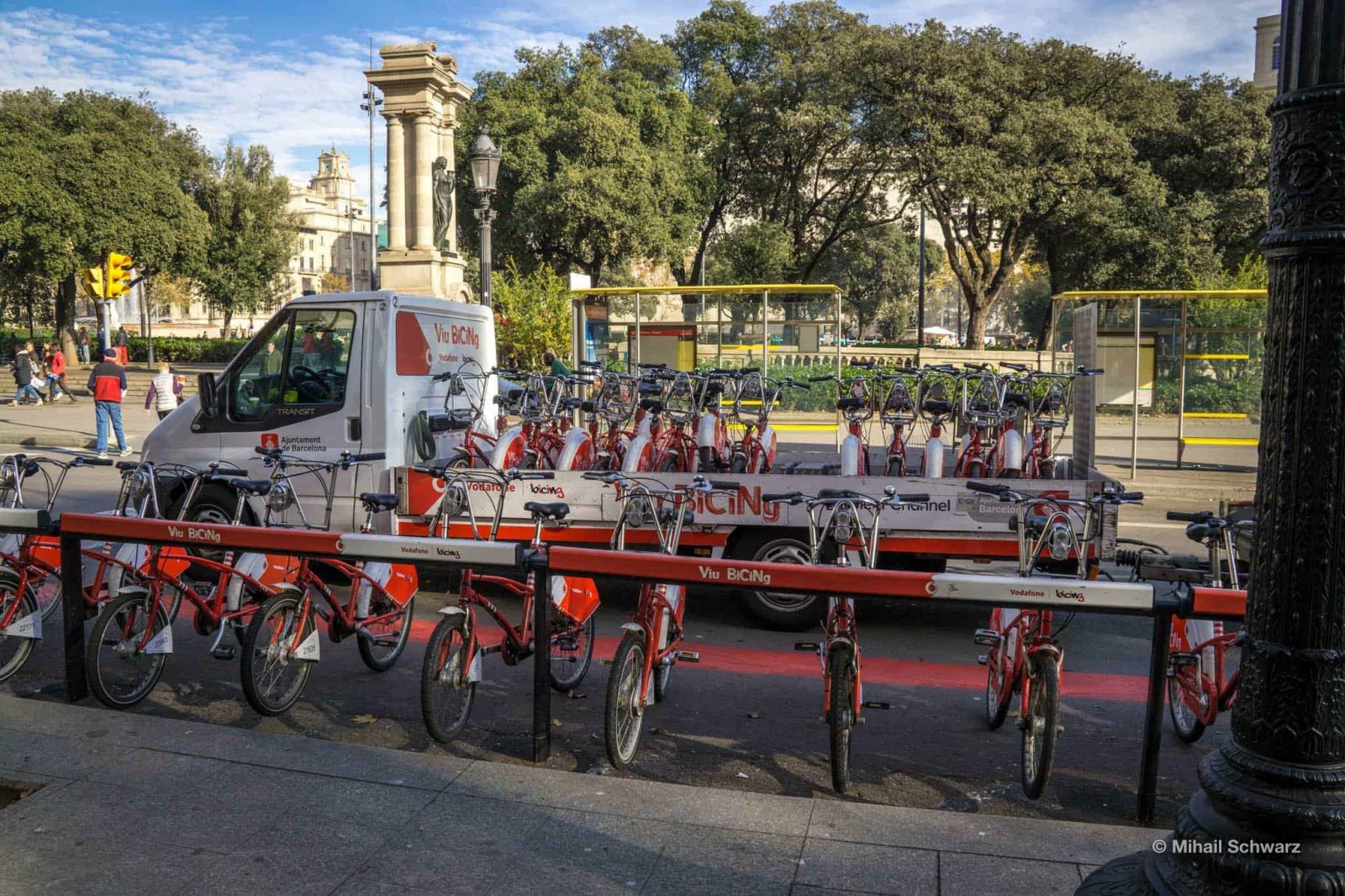
Getting to know the city by bike is fun, fast, and fairly affordable. To save time and money, book bikes, motorcycles and scooters at BikesDooking.com.
Install the Scoot mobile app on your phone, book your nearest bike, pick it up and ride it around town. At the end of the ride, leave your two-wheeled friend at any convenient place. For information, see scoot.co/barcelona.
Here are a few more bike rental companies in Barcelona. See their websites for rental rates, insurance, addresses and opening hours:
Where To Eat In Barcelona
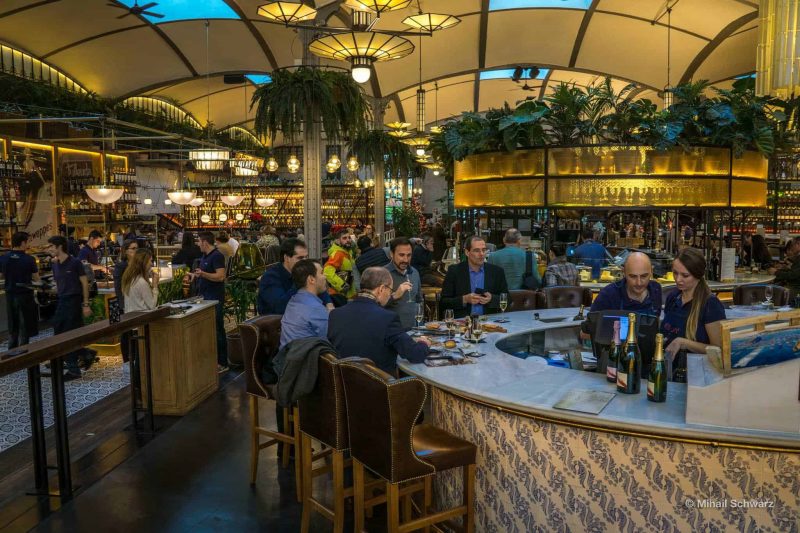
If you get hungry on a weekday between 1 and 4 p.m., look for restaurants where the Menu del Dia is written on the board in front of the entrance. This means that the place has a set daily offer, which costs €8-15. Usually it’s 3-4 choices of first, second, dessert and local wine. The portions are larger than the standard ones.
I’ll tell you a few restaurants where you can taste the seafood without much damage to the wallet.
Los Caracoles Restaurant. Try here also gazpacho with strawberries and the signature oxtail. Check from €30.
At Agut order cod under a cold aioli, octopus, grilled shrimp, tuna steak, paella. Chcek from €12.
In the fish restaurant chain La Paradeta you will be offered a choice of seafood, which is cooked right there. The average bill is €20. The easiest and cheapest option is to come to the cafe on the beach in the morning, when the fishermen have just returned with their catch, and order whatever you like.
You can eat a delicious ham or favorite cheese and drink good wine at the tapas bar La Vinateria del Call, paying from €11.
Café El Casal has a good combination of price and quality. For breakfast they offer croissants, toast, eggs and bacon; at lunch there is the Menu del Dia; a large selection of tapas and a delicious ciabatta with cheese, bacon, sausages or jamon. Price from €11.
Can Paixano (La Xampanyeria) is a small café where locals like to sit. Noisy, atmospheric. A burger + a glass of white wine will cost 6€.
Honest Greens is a chain of restaurants with healthy and wholesome food from local Catalan farmers.
You can buy ready-made salads, bread, jamón, sliced cheese and even a bottle of sangria at the market or in a supermarket, such as the 1st floor of the El Corte Inglés department store, and eat it right on Plaza Catalunya, sitting on a bench.
What To Try In Barcelona
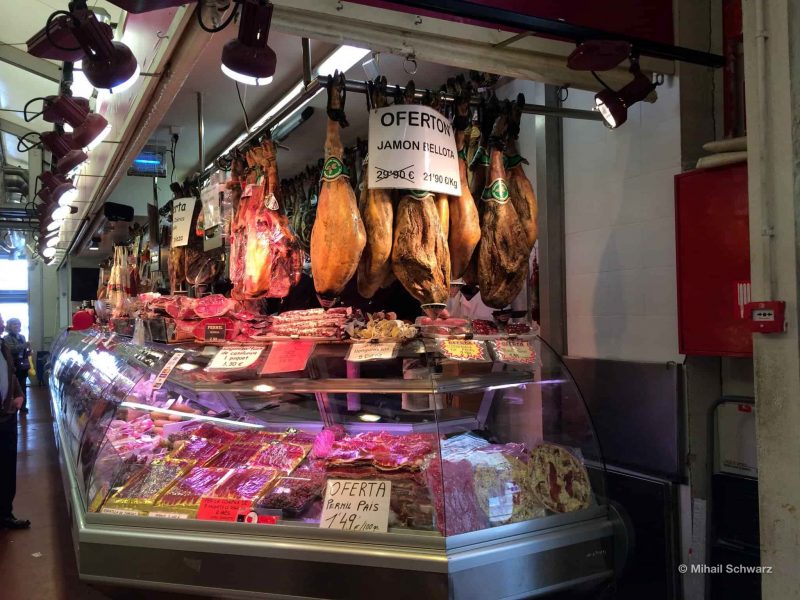
- Paella (catalan paella) is a rice dish with seafood, chicken, pork, or veal;
- fideuá is the same as paella but with small noodles instead of rice;
- gaspacho is a cold soup made of freshly grated vegetables (mostly tomatoes, cucumbers, peppers, onions, and garlic);
- tapas are an appetizer for beer or wine. It can be olives, anchovies in vinegar (boquerones), sheep cheese (queso manchego), fried green peppers (pebrots verds fregits), fried calamari (chopitos), salted cod on bread (bacalao), grilled cuttlefish, fish kebabs with vegetables (banderillas), etc.;
- Serrano ham with bread and tomatoes (jamón serrano). The name of the ham comes from the word sierra, a mountain range where meat is cured during the year;
- escudella (escudella i carn d’olla) is a Catalan soup with meat. It is served as two dishes: a rich broth with pasta or rice, and meat with vegetables;
- an omelet with potatoes (tortilla de patatas), which is cut into triangles and eaten hot or cold like a pie;
- the Catalan sausage Butifarra. It is usually served with white beans, but can also be served with salad and fries;
- Catalan bread with tomato (pa amb tomàquet) – toasted bread rubbed with ripe tomato and garlic, seasoned with olive oil and salt;
- between the sea and the mountains (mar i Muntanya) is a dish that combines shrimp (sea) and chicken (mountain) in a sauce of tomatoes, onions and garlic. It can also be a combination of meat and fish;
- crema Catalana is a delicate custard with a hint of cinnamon and citrus under a crispy caramel crust, made from milk, eggs, caramel and caramelized sugar;
- panelets are small cakes consisting of almonds, sugar, and sweet potatoes; dates, cinnamon, cocoa, and pine nuts may be present;
- turrón (torró) is a sweet made of egg whites, almonds (or hazelnuts), honey, and sugar. Torró is either hard or soft. In the soft one they add olive oil;
- churros are a tube of custard dough fried in a deep fryer. The pastry is served with hot chocolate;
- black rice (arròs negre) is made with rice, shrimp, squid, fish, mussels, onions, garlic, and tomatoes. The black color and flavor of the dish is given by cuttlefish ink. Black rice is served with allioli sauce (homemade garlic mayonnaise);
What Local Alcoholic Beverages Are Worth Trying
Sangria is a traditional light alcoholic drink, a mix of wine, ice, fruit, berries and spices.
Tinto de verano (tinto de verano) is the democratic equivalent of sangria, in which red wine is mixed with lemonade or soda.
Cava is a sparkling wine made according to the traditional Champenoise method from Macabeo, Charello and Parellada grapes or other authorized varieties. The minimum price per bottle is €3-6. The most popular brands are Codorniu, Freixenet, Pago de Tharsys, Segura Viudas.
Wine. Catalonia is famous for its white and red wines. It produces the largest number of wines with registered origin – Denominacion de Origen (DO). Catalan wines have a noble, velvety taste and a special temperament.
In Barcelona it is customary to drink Vermú in black, diluted with seltzer carbonated water, with a slice of orange. It is consumed before dinner, as it stimulates the appetite and prepares the stomach for the meal.
Estrella Damm beer has been produced in Barcelona since 1876. Moritz beer was created in Barcelona, but is now produced in Zaragoza.
Anise liqueur, Anís is an alcoholic beverage used as a digestif and used in baking.
Crema catalana is a refined liqueur with notes of vanilla and cinnamon, its taste resembles a creamy dessert, strength 15-18%.
Pacharán is a liqueur of thorns, anise, caramel and various aromatic additives, with a strength of 20-30%.
Lemon Liqueur (Licor de limon). It consists of lemon juice, sugar, ethyl alcohol and water in equal parts, strength 25-32%.
Liqueur Montserrat is a wonderful bouquet of mountain herbs, an invention of monks of the Montserrat monastery, strength 31%. It consists of 15 ingredients: lavender, cinnamon, juniper, clove, coriander, thyme, water and sugar.
Licor 43 is popular in Spain. The recipe is kept secret. The only known fact is that the composition includes 43 ingredients, including vanilla, citrus, herbs and other fruit and spice. The strength is 31%.
Crema de orujo is a milder version of grape brandy (orujo), that is, sweeter and creamier. Its strength is 17%. Its taste is reminiscent of Baileys.
Clara. The full name of the drink is “clara con lemon”, a summertime low-alcohol cocktail, a mixture of light beer and lemonade in equal proportions. The low alcohol content does not cause intoxication, the taste of beer is almost not felt, and the tonic effect is immediately apparent.
Calimocho is a cocktail of red wine and cola in equal proportions with ice and lemon.
Is It Customary To Leave A Tip In Barcelona
Tipping is gratitude, not a sign of good manners. It is customary to leave a few tens of cents for breakfast or a full meal in a cafe, rounded up to 50 cents or euros. If you are satisfied with the food and service in the restaurant, we can talk about 5% tip. And if you’re delighted with the place, why not leave 10%?
The word “IVA” on the bill is a tax, the amount of which is about 10%, not the amount of the tip. Tipping in Spain is usually not listed on the bill.
What Time Is Better To Go To Barcelona
The timing of a trip to Barcelona depends on the purpose of the trip. For a beach holiday focus on the period from mid-May to mid-September. To explore the city and its surroundings is more comfortable in spring and autumn. It is cheaper to go in November, January or February, when flight and hotel prices are the lowest. The high season is from mid-June to late September, as well as at Christmas, New Year’s Eve, Easter and the Festival of La Mercer (September 24).
In summer, especially in August, Barcelona is very hot and crowded. The sea warms up by mid-July. Accommodation and flights are expensive, and there are queues to see the sights and restaurants.
Co second half of September begins the velvet season, which lasts almost all of October. The air and water temperature is about +26 °. By the end of October, it gets cooler, it begins to rain and prices for flights and hotels go down. This time is suitable for sightseeing.
Winter is a time of inexpensive holidays and cultural tourism. The average temperature is +10°, humid and windy. But if you’re a fan of Gaudi, seafood, and wine, it doesn’t hurt. In mid-January, the sales begin.
In spring, from late April to mid-May, the weather is comfortable for walking and exploring the capital of Catalonia. The sea, however, will still be cold and the beach will not be very pleasant.
Where To Buy Groceries
- In supermarkets Mercadona, Lidl, Día, Caprabo, Carefour
- In markets.
How To Get From Barcelona Airport
On The Subway
The automated L9 Sud metro line connects the T1 and T2 airport terminals with the city. Trains run every 7 minutes. The line has 3 transfer stations: Torrassa (L1), Collblanc (L5) and Zona Universitària (L3). The journey by subway from the airport to the center of Barcelona takes about 30 minutes. To travel, buy a single trip Airport ticket for €5.15 or Hola BCN!
By Bus
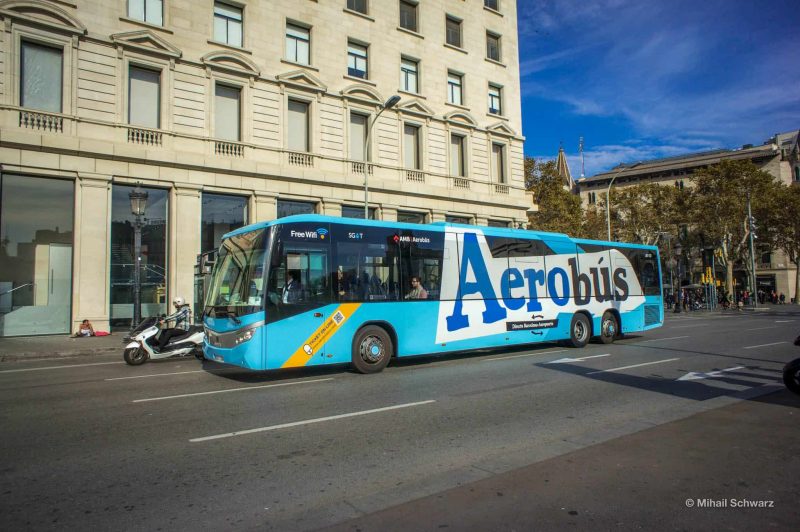
The Aerobús A1 and A2 buses are convenient to get to the center. Its stops are located near terminals T1 and T2. Buses run every 5 minutes. The travel time is 35 minutes. The main stops are Spanish Square (Pl. Espanya) and Plaza Catalunya (Pl. Catalunya). Tickets cost €5.90. Round trip tickets cost €10.20. Tickets can be bought from vending machines at the stop or online.
The cheapest way is to take the bus 46, which runs every 15 minutes and will take you to Spain Square in 30-40 minutes. A single ticket for €2.40, the T-casual for 10 rides and the Hola BCN!
At night you can take the N17 or N18 bus from T1 to Plaza España.
By Train
Every half hour there is a RENFE train service between the airport and the city. The railway station is located next to the terminal T2. You can walk to it by a covered passage. In 25 minutes you are in the center. Choose the Sant Estació or Passeig de Gracia stops. For timetables and prices, see the website renfe.com.
By Cab
Cabs are a convenient way to get to the center of Barcelona. Cab stands can be found near terminals T1 and T2. The trip to the city will take 25-35 minutes and will cost from €35.
How To Buy Tickets For Trains And Buses In Spain
OMIO, a service for booking tickets for trains, buses and planes. Compare and buy.
The Renfe website sells tickets for trains to any part of Spain. Those who have planned a trip in advance and registered in the loyalty program +Renfe have the opportunity to save.
Travel around Spain comfortably on Alsa buses. On the company’s website tickets are posted in advance, there are many discounts and promotions. And registration in the bonus program will allow you to accumulate points and save on commissions.
How To Move Around The Country
It is better to rent a car.
Which Cab Ordering Apps Work In Barcelona
Cabs in Barcelona can be taken at a cab rank, “caught by hand”, ordered by phone or on a pre-booking website. Or you can download into your phone one of the mobile applications to order a cab:
- Free now (mytaxi)
- Cabify
- Taxi Barcelona: Yellow
- Calcula la Ruta (Taxi Barcelona)
- Taxi Ecologic Barcelona App
- Taxi Blau Barcelona
- TAXI BCN (Radio Taxi Barcino)
Where To Go For A Day Out Of Barcelona
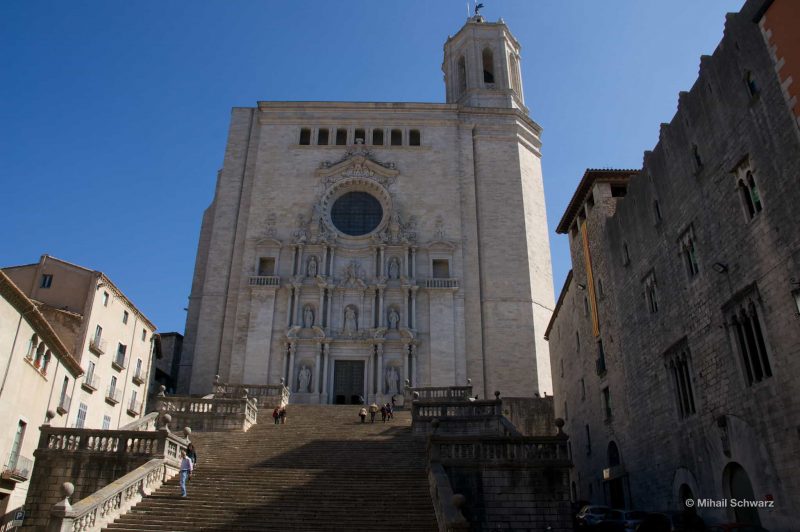
Vik is a medieval town located 75 km from the capital of Catalonia. It amazes with the variety of architectural styles. Interesting are the Roman temple of the II century, the Cathedral of the XI century, the bridges of the XI century over the dried up river Meder. The lampposts and balconies of the mansions in the city center were designed by Antoni Gaudi. On Tuesdays and Saturdays there is a market in the Market Square where you can buy the famous Catalan sausage, leather handicrafts and much more. Vic is also known for its festivals and celebrations.
Sitges is a popular resort about 40 km from Barcelona. There are not many historical places of interest here. But along the coast runs a strip of golden landscaped beaches. The city hosts an annual carnival, an international Argentine Tango festival, a film festival of sci-fi and horror movies, a classic car rally. Sitges is the birthplace of Facundo Bacardi, the founder of the eponymous company.
Girona (Girona) is a city at a distance of 100 km from Barcelona where the medieval architecture of the historical center and the modern urban culture are well combined. The main attraction of the old town is the 15th century Gothic Cathedral (Catedral de Santa Maria). You will also see Roman fortresses, medieval buildings and the unique architecture of the Jewish Quarter. Girona has a lot of festivals, celebrations and street processions. There are several restaurants specializing in Catalan cuisine.
Cardona is a small old town about 100 km from Barcelona. It has a castle built at the end of the ninth century by Betrred the Hairy, several ancient churches, medieval buildings and salt caves.
Empuriabrava is a young resort town on the Gulf of Roses in the Ampurdan National Park. It is located 160 km from Barcelona. The whole town is rugged with canals. Because of this it is dubbed the “Venice of Spain”. Because of the steady winds Empuriabrava is popular with yachtsmen. Not far from the city are the ruins of the ancient Greek colony of Empurion, founded in 575 BC.
Montserrat (Monestir de Montserrat) is a Benedictine monastery and pilgrimage center 50 km from Barcelona. It was built 1,000 years ago on the quaint, crenellated mountain of Montserrat at an altitude of 725 meters. The main building of the complex is the Basilica of Our Lady of Monserrat, in the Throne Room of which stands the Black Madonna (statue of the Virgin of Monserrat). Every day at 1 p.m. a hymn to the Virgin Mary is sung in the temple by the boys’ choir.
Colonia Güell is located 15 km from the city center. It is a factory village. For the workers there were small houses with a garden, but for the management there were respectable mansions. On the territory of the complex is Gaudi’s crypt, a UNESCO World Heritage Site. In October, the Colonia has a festival with markets, theatrical shows and carnivals.
The old town Manresa is located on the Cárdena River, 70 km from Barcelona. The Gothic Basilica of Santa Maria de la Seu, the Art Deco architectural ensemble of the Plaza Sant Domènech and the 13th century stone bridge (El Pont Vell) are worth visiting. The cave of Santa Cova, where St. Ignatius de Loyola prayed, is worth a visit. Manrese produces excellent wine.
From Barcelona to Solsona is 115 km away. The city has a medieval center with a cathedral and a diocesan museum. Every year there are extravaganzas, carnivals and festivals.
Tarragona is a quiet and beautiful seaside city with a rich history. The coastal hill called “Balcony of the Mediterranean” overlooks the sea, the city and the ruins of Roman structures, which have been designated a UNESCO World Heritage Site. Barcelona is about 100 km away.
Montblanc (Montblanch) is a town at the foot of the White Mountain (Mont Blanc). It is 120 km away from Barcelona. It was founded in the 12th century. Montblanc attracts with its medieval architecture, ancient legends and the beauty of the surrounding mountains. Here you can see a 1.5 km wall-fortress with 31 towers above it, the hospital of St. Magdalena, the churches of Saints Maria, Francis and Miguel and the Plaza Mayor.
In the vicinity of Mont Blanc there is one of the longest caves in the world Font Major and the 12th century monastery of Poblet (Reial Monestir de Santa Maria de Poblet) with a large collection of paintings and sculptures.
The “Dali Triangle” includes three cities – Figueres, Pubol, Cadaqués (a distance of about 150 km), which are closely associated with the life and work of the surrealist painter Salvador Dali.
Dali was born in Figueres. The theater-museum, built according to the artist’s design, has become the city’s main attraction. Paintings, sculptures, photographs, engravings and jewelry by the master are on display. The great Catalan himself is buried here, in the crypt under the dome.
Cadaqués (Cadaqués). In the past it was a fishing village, but today it is an amazingly beautiful resort town with white-washed houses. Cadaqués has gained enormous popularity thanks to the enthusiastic stories of Salvador Dali, Marc Chagall, and Federico Garcia Lorca. The most visited attraction of Cadaques is the Salvador Dali Museum.
In the small town of Púbol (Púbol) is the castle that Dali gave to his wife Gala. The castle retains a special atmosphere, permeated by the happy and tragic events of the last decades of Dali’s life. It is now a museum. Gala is buried in a crypt decorated during the artist’s lifetime.
Salou is one of the most popular Mediterranean resorts, located on the picturesque, rugged Costa Dorada, 110 km from Barcelona. But it is known not only for its beaches, but also for the nearby popular amusement park Port Aventura
Reus (Reus) is the birthplace of Antoni Gaudi. In the city there is a thematic center dedicated to the famous architect. The distance to Barcelona is 110 km.
Resort towns Blanes, Lloret de Mar, Tossa de Mar, Escala (L’Escala) is known for its beaches.
The city Vilanova i la Geltrú is called “Little Havana”. It ranks 1st in quality of life in Catalonia. It is 50 km away from Barcelona.
The Valley of Saint Núria (Vall de Núria, Val de Núria) is a picturesque valley, a secret corner in the Pyrenees Mountains. It is located almost 2 km above sea level, surrounded by three-thousand meters high mountains. It’s 130 km to Barcelona. You can get up to the valley only on the train crenellated railroad cremallera (translates as “lightning”).
El Torrent de la Cabana are mountain streams, waterfalls and cascades of lakes with crystal clear emerald water. Such a landscape can be seen 110 km from Barcelona in the Pyrenees Mountains.
The reservoir of Sau (Pantà de Sau) and the cliffs of Tavertet are beautiful and unusual places 10 km from the capital of Catalonia. In 1962 the river Ter was dammed and the resulting reservoir swallowed up the village of Sant Romà de Sau with its 11th century church. The reason for flooding was the increasing need of Barcelona for drinking water and electricity. The reservoir has hotels and camping sites, observation decks and beaches.
Wine regions Priorat and Alt Penedès are famous for their good wines and amazing landscape. They are about 50 km away from Barcelona. Penedès is the birthplace of the famous cava. The most famous producers of this sparkling wine are the Codorníu company, headquartered in Sant Sadurní d’Anoia, and Freixenet, whose production is also located in this city. And the Priory’s wines have long occupied a place of honor in the world of winemaking.
Annual Festivals And Celebrations In And Around Barcelona
- The Cavalcada dels Reis Mags is a costumed street procession. It takes place on January 5;
- The Day of the Three Kings (Dia de Reis) is celebrated on January 6. On this day, Spanish children receive gifts from the Magi;
- The Onion Festival of Calçotas (Gran Festa de la Calçotada) takes place at the end of February. The main Calçotada takes place in Valls;
- Barcelona Carnival (Carnestoltes) is celebrated in late February and early March;
- The Festival of Santa Eulàlia (Festes de Santa Eulàlia) takes place on February 12. You’ll encounter living statues and giant puppets, and fireworks will be launched in the evening;
- The Beer Festival is held in mid-March in L’Hospitalet de Llobregat at the Centre d’activitats de la Farga;
- Semana Santa is a religious festival during the pre-Easter Holy Week;
- Easter (Pasqua) is celebrated in April. They give chocolate eggs or whole chocolate arrangements, rather than painted ones, for the holiday;
- Saint George’s Day (Diada de Sant Jordi, San Jordi) is the Catalan equivalent of Valentine’s Day, during which it is customary to give women roses and men books, held on April 23;
- The Spanish Grand Prix (Gran Premi d’Espanya de Fórmula 1) is a Formula One race held at the Circuit de Catalunya (Montmelo) usually in April and May;
- In mid-May, Girona opens its annual festival of flowers (Temps de Flors);
- Primavera Sound, an annual music festival by the sea in early June;
- Sónar festival, an annual electronic music and multimedia arts festival in mid-June;
- The bonfires of St. John the Baptist (Fogueres de Sant Joan) is a holiday corresponding to our Ivan Kupala. In Spain it is celebrated on June 24;
- The Gracia Festival (La Fiesta de Gràcia) is expected in August. It is a street decorating competition;
- August 15 is the church holiday of the Assumption of the Virgin Mary (Assumpció de Maria). Church services, processions and theatrical performances are held everywhere;
- The festivals of the Poblenou and Horta districts take place in the first half of September. You will be greeted with a procession of giant puppets, a construction of castellas towers and a street show of correfonds with devils, fire and pyrotechnics;
- September 11 is the National Day of Catalonia (Diada Nacional de Catalunya). Residents dress in the colors of the Spanish flag, march through the main streets of the city and hold demonstrations and concerts;
- The Festival of La Mercè lasts for a whole week, but it culminates on September 24. The festival is dedicated to the patroness of Barcelona Our Lady of Mercy (Mare de Déu de la Mercè);
- October 12 is the National Day of Spain (Fiesta nacional de España) and Saint Virgin Pilar Day (Fiestas del Pilar). The celebrations last for 6 days;
- In October, Sitges hosts the Festival Internacional de Cinema Fantàstic de Catalunya (International Horror and Fantasy Film Festival);
- The Festival Internacional de Jazz de Barcelona is held from October to November. Jazz is heard at every turn – in pubs, in squares, in parks, in concert halls.
- Immaculate Conception Day (Festa de la Immaculada Concepció) is celebrated on December 8;
- On December 25, Barcelonians celebrate Christmas in a family way;
- December 26 is St. Stephen’s Day, the Day of Gifts. The Spanish tradition is to give presents and good cheer;
- December 31 – New Year’s Eve (Nit de cap d’any) is celebrated merrily and noisily. At this time you can see a man with a nose (home dels nassos), and at the sound of the chimes you must eat 12 grapes.
Is It Safe In Barcelona
Impunity and indifference on the part of the city authorities have made thieves and pickpockets feel perfectly comfortable in Barcelona. You have to be very careful not to get caught by thieves. Watch out for your backpacks and mobiles!
Do They Speak English Well
The touristy places speak well.
What To Bring From Barcelona
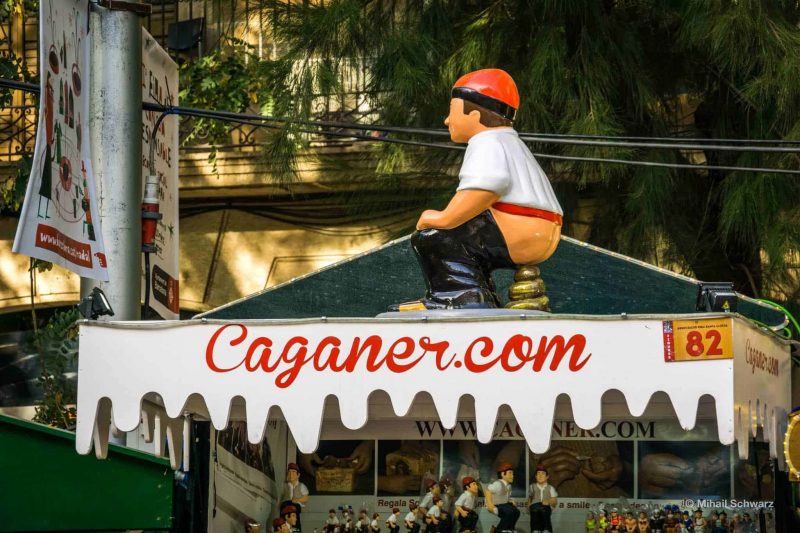
- Fuet (fuet) and chorizo (xoriço) are traditional Spanish sausages;
- jamón, raw pork ham;
- cheeses: Betara (goat creamy gray cheese), Queso Tupi (a soft sharp cheese with a subtle aroma of alcohol and green olives), Alt Urgell i la Cerdanya (creamy and mild to the taste), Tou del Tillers (reminiscent of French Brie), Mató de Montserrat (a fresh dessert cheese), Costa Negra (covered in black crust, white and uniform inside), Serrat (sheep yellow hard cheese), Drap (sweet to the taste), Tupi (dessert cheese), Garrotxa and Montsec (goat soft cheeses ripened under a layer of ashes);
- sparkling wine Cava, sangria, white or red wine;
- porró, a glass or earthenware vessel for consuming wine;
- olive oil;
- sauces: aioli (allioli), romesco (romesco), brava (brava), garum (garum);
- spices: chili pepper, saffron, paprika, fennel, coriander, parsley, cilantro;
- chocolate, tourron, carqinyolis cookies;
- Tealosophy tea;
- natural cosmetics: Matarrania, Amapola, Dulkamara;
- sports paraphernalia: clothes, balls, towels, backpacks and other useful items decorated with the logo of FC Barcelona;
- espadrilles (espardenya) is a lightweight summer shoe with a rope sole made of jute;
- Munich sneakers and Kokua ballet shoes;
- clothing brands Desigual, Custo Barcelona;
- Catalan lace;
- leather goods: shoes, bags, purses, wallets, belts, wine bottles with Spanish symbols;
- the kaganer is a small statue representing a man who is relieving a large need;
- the fan is not only a means of protection from the heat, but also a beautiful accessory;
- castanets are a percussion instrument, an attribute of flamenco dance;
- souvenirs in the style of Gaudi (copies of his creations, lizard figurines from Park Guell, tea mugs, a book about the architect);
- handmade ceramics with a touch of modernism that are sold in the shops of the Gothic Quarter.
What To See In Barcelona In Winter
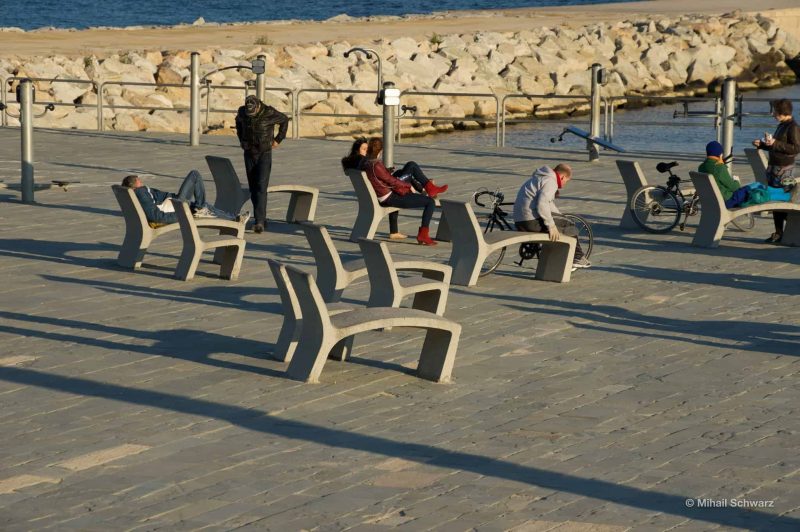
For optimum weather conditions and low cost, choose a winter vacation in Barcelona. It is in winter that you can see a different side of the city: at home and without thousands of visitors storming the sights. Where to go and what to see in winter
- Without queuing, see the sights of Barcelona and visit museums.
- On a sunny day, stop by one of the city’s beaches for a traditional outdoor paella with a view of the sea.
- If you want it colder, make your way to the Barcelona Ice Bar on the beach near Port Olimpic. There’s a chamber with temperatures below 0°, full of amazing ice sculptures.
- Listen to jazz at one of the Jazz Festival venues.
- Visit the Christmas markets and experience the fabulous holiday atmosphere.
- Go ice skating in Plaça Catalunya.
- Try “winter” soups, meat stews and sea urchin (the big catch of urchins is in January), drink hot chocolate with churros, taste traditional Christmas dishes like canelones, Xuixo cream-filled sugar cake, Roscón de Reyes cupcake.
- Meet the New Year with a glass of Cava.
- And how about the Copa Nadal de natació winter swim on Christmas Day, December 25, an amateur 200-meter swim competition held in the port of Barcelona in front of the statue of Christopher Columbus.
- Go shopping. January is the start of the sale season.
- Several holidays fall in the winter. All of them are colorful and bright, with costumed street parades, theatrical performances, entertainers, holiday fairs, and fireworks. Join in the fun.
- Walking through Ciutadella Park is a pleasure: quiet and unhurried, beautiful architectural design of the park, lots of parrots, tangerine trees and palm trees. Check out the zoo.
- From the observation deck of Bunker El Carmel, sitting on pebbles amidst a semi-wild park, view the perfect location of the streets of the Eixample neighborhood, the Agbar and Mapfre towers, the port, the Temple of the Holy Family, the Cathedral, the skyscrapers of the Port Olimpic, the Montjuïc Mountain.
- Discover the theaters of Barcelona.
- Make a pilgrimage to the Montserrat Monastery. In winter the mountains look even more beautiful.
If I missed anything interesting – I look forward to your advice in the comments.

